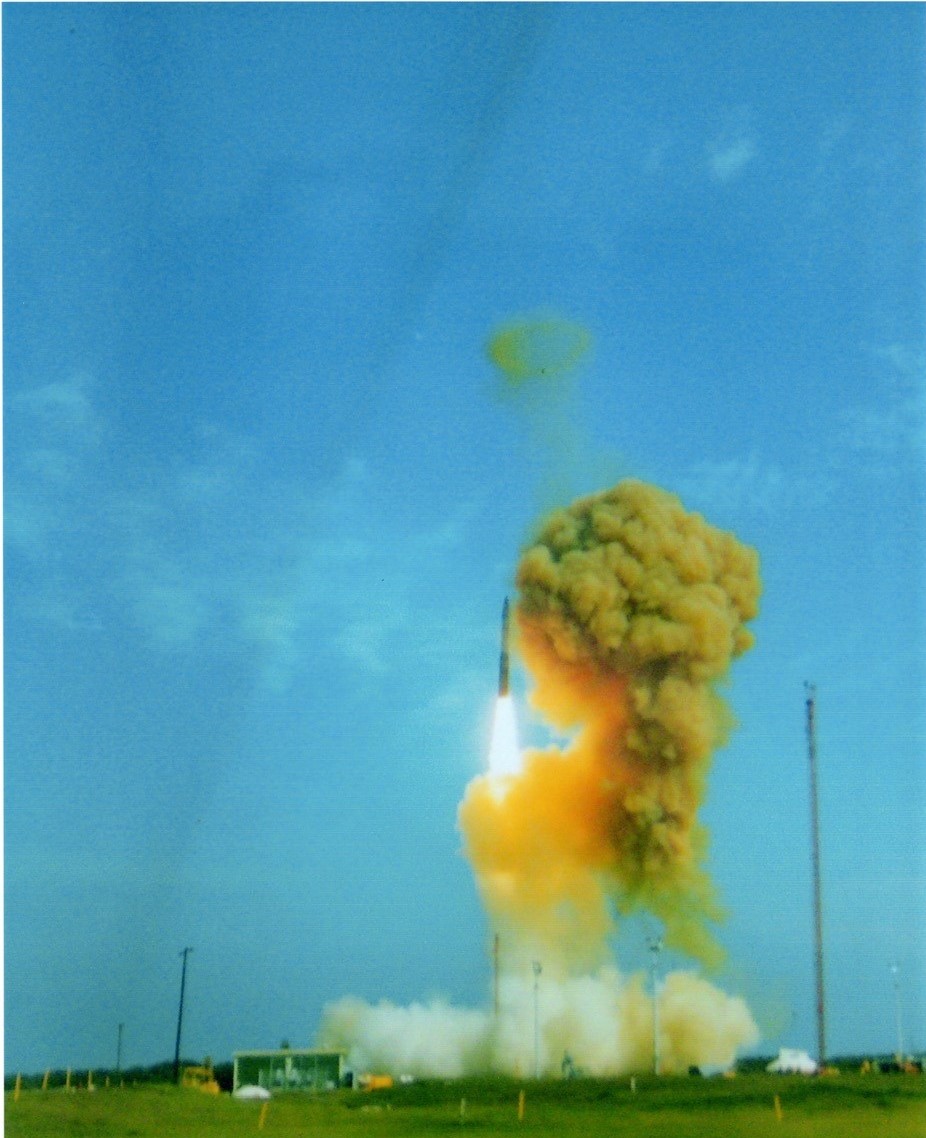MINUTEMAN III FACT SHEET
By Cliff Lethbridge

Minuteman III Launch, Photo Courtesy U.S. Air Force
Classification: Inter-Continental Ballistic Missile
Length: 59 feet, 9 inches
Diameter: 6 feet, 4 inches
Range: 8,078 miles
Date of First Cape Canaveral Launch: August 16, 1968
Date of Final Cape Canaveral Launch: December 14, 1970
Number of Cape Canaveral Launches: 17
The Minuteman III, designated LGM-30G Mk III, completed the evolution of the Minuteman family by introducing a new third stage and advanced re-entry vehicle. Aerojet and Thiokol jointly designed the third stage engine, which could produce a thrust of 34,400 pounds. The engine employed a single fluid injection nozzle. The third stage also featured a new post-boost propulsion system from Bell Aerospace. The advanced system increased guidance accuracy by employing a 300-pound thrust motor for forward motion, a 22-pound thrust motor for pitch/yaw and an 18-pound thrust motor for roll. A dramatically improved GE re-entry vehicle was itself made up of three separate, maneuverable re-entry vehicles. Each re-entry vehicle could be independently targeted and could carry a 200 kiloton warhead. Warhead capacity was later increased to 350 kilotons with the introduction of a further upgraded GE re-entry vehicle. The total package had a total circular target error of just 1,200 feet at a range of over 8,000 miles.
By February, 1969, all LGM-30A Minuteman I missiles had been withdrawn from service, leaving a 1,000-Minuteman force with a combination of LGM-30B Minuteman I and Minuteman II missiles. The first Minuteman III squadron was activated at Minot Air Force Base, North Dakota (Wing III) in December, 1970. Full force modernization of the Minuteman Wings had begun, and by July, 1975, all remaining LGM-30B Minuteman I missiles had been removed from service. The ultimate deployment was made up of a mixed fleet of Minuteman II and Minuteman III missiles deployed at all six operational wings. As per the original plans, 200 missiles each were deployed at Wings I and V, while 150 missiles each were deployed at Wings II, III, IV and VI, comprising a total force of 1,000. At its peak, the Minuteman fleet had a standing capability of delivering 2,100 warheads. In addition, a technical option was left open to carry satellites aboard Minuteman III silo-based missiles. Although this was never actually done, the U.S. Air Force proposed this option in case launch sites at Vandenberg Air Force Base, California or Cape Canaveral became disabled by acts of war.


